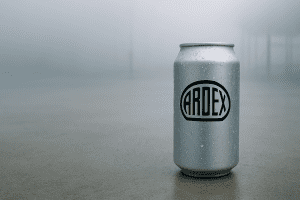
What is Dew Point?
Dew point is the temperature where the air is so full of moisture it can’t hold any more, so water starts to come out of the air and collect on surfaces. This process creates condensation.
The dew point depends on both:
-
Humidity (how much moisture is in the air)
-
Air Temperature (which changes how much moisture the air can hold)
The colder the air the less moisture it can hold. When a surface cools to the dew point temperature or lower, the moisture in the air condenses into liquid water on that surface.
Think of a cold drink can on a humid day — water forms on the outside. The same happens on construction surfaces like concrete when they’re cooler than the surrounding air. This is especially common in early mornings, or during cold humid weather.
Why Does It Matter?
Condensation creates a thin film of water on surfaces. This interferes with how ARDEX products bond and cure. Specifically:
-
Cement-based adhesives and levellers may not set properly.
-
Epoxies may not harden as expected.
-
Membranes may blister or fail to adhere due to condensation on the adhesive.
-
Grouts may show efflorescence (salt deposits).
If moisture is trapped under a product, it can lead to long-term failures like delamination or weak bonding.
When Is It a Problem?
Dew point issues arise when:
-
Ambient temperatures drop below 10°C.
-
Humidity is high—common in winter or tropical climates.
-
Higher humidity or cooling causes surfaces to fall below dew point.
Where Does It Occur?
A typical example you can find condensation occurs is when using a solvent based adhesive. When solvent evaporates it can reduce the surface temp by up to 4°C. In simple terms if your current air temp is 12°C and dew point is 10°C. An application with solvent based adhesive will cause the surface temp down to 8°C and resulting condensation on the adhesive as it is now below dew point. You’ll see condensation risks in:
-
Concrete slabs and screeds, especially in basements or shaded areas and enclosed areas.
-
External and Internal surfaces exposed to a change in surface temperature cooling.
-
Indoors where air conditioning is running but moisture isn’t controlled.
How to Manage It
To avoid dew point-related failures:
-
Ensure surface and air temperatures stay above dew point. A simple weather info can show the dew point forecast for your location. (Below is example of dew point is only 3°C below air temperature).
-
Use dehumidifiers or air conditioning to reduce indoor humidity.
-
Simple air movement with fans, but not directly on the surface a least 500mm above the surface
-
Don’t apply ARDEX products to visibly damp or cool surfaces.
-
Use moisture barriers on concrete where drying is slow.
-
Prime surfaces to reduce moisture absorption.
-
Schedule critical work for warmer, drier parts of the day.
ARDEX advises against using water-based or cementitious products below 10°C and recommends checking substrate conditions before application.